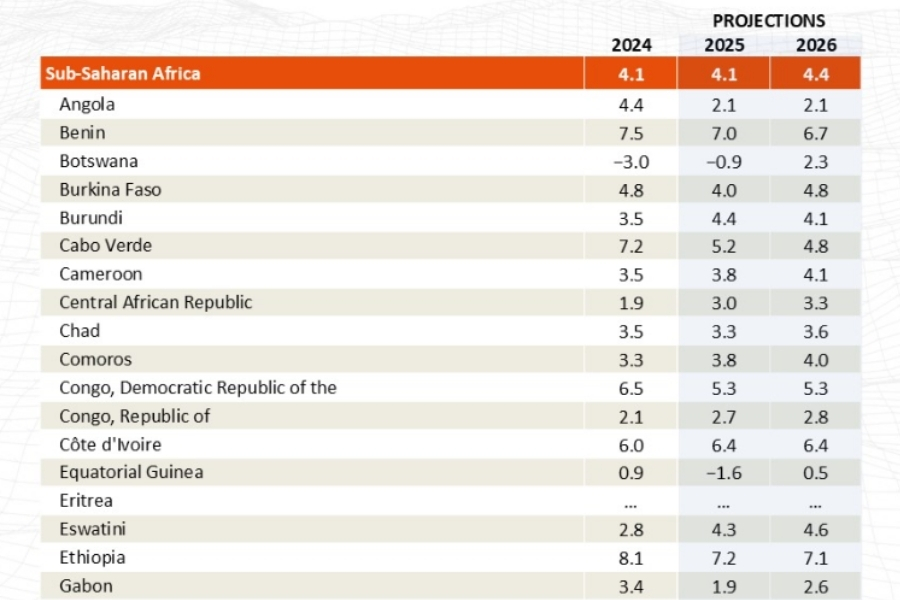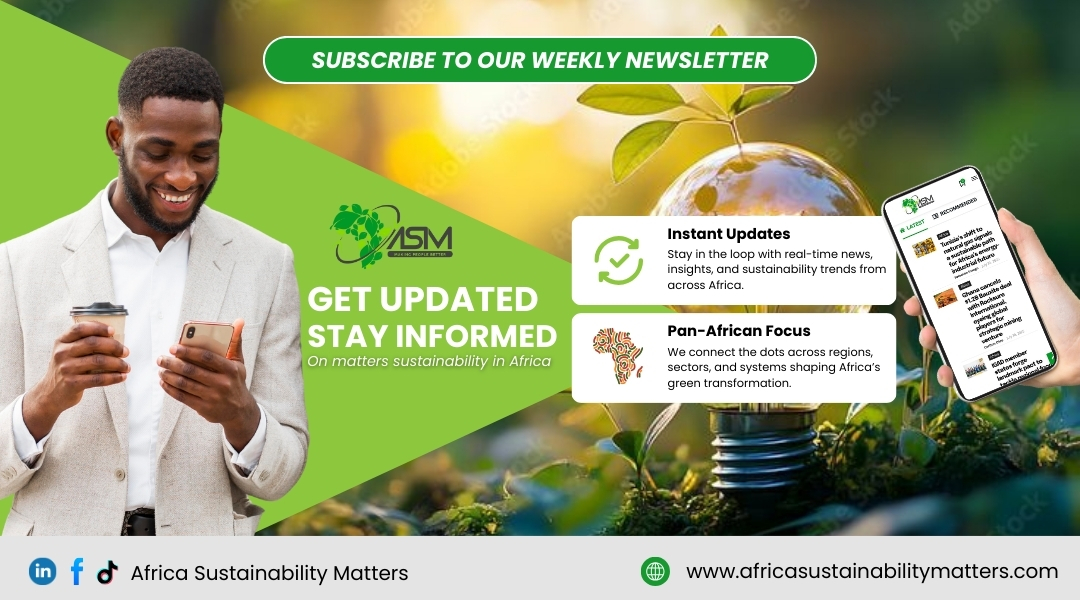Despite a turbulent global economy, Sub-Saharan Africa’s economic engine is proving resilient. According to the International Monetary Fund’s (IMF) October 2025 Regional Economic Outlook, the region’s GDP growth is projected to hold steady at 4.1% in 2025, with a modest improvement expected in 2026. The IMF cautions that this resilience “cannot be taken for granted,” as fiscal and external pressures continue to test governments across the continent.
The report comes at a time when African policymakers face one of the toughest balancing acts in recent memory, stabilizing economies amid weakening global trade, tightening financial markets, and shrinking aid flows.

Five countries; Benin, Côte d’Ivoire, Ethiopia, Rwanda, and Uganda, continue to anchor the continent’s growth trajectory, ranking among the world’s fastest-growing economies. For them, reform efforts, improving macroeconomic frameworks, and sectoral diversification have paid off.
But for resource-dependent and conflict-affected economies, progress remains fragile. In most of these states, income per capita growth is still below 1% annually, while high debt servicing costs are squeezing public investment and social spending. The IMF warns that 20 African nations are now at high risk of or already in debt distress.
Read also: Major global corporations join forces to establish unified carbon accounting standards
Global headwinds compound these internal challenges. While prices for key commodities such as cocoa, coffee, copper, and gold remain well above pre-pandemic levels, oil exporters are facing revenue declines as prices cool. Meanwhile, foreign aid flows are projected to drop between 16% and 28% in 2025, exposing fragile economies such as South Sudan, Niger, and the Central African Republic to fiscal shocks.
Sub-Saharan Africa’s access to international capital markets has slightly improved in recent months, Kenya successfully raised $1.5 billion through a Eurobond in October 2025, followed by Angola’s $1.75 billion issuance. However, borrowing costs remain steep and uneven. Countries with stronger policy credibility and reform progress, such as Benin and Côte d’Ivoire, enjoy relatively better terms.
Regional sovereign yields remain high, reflecting investor caution amid geopolitical uncertainty. The IMF warns of rollover risks, with billions in external repayments due in 2025–26, including $2.3 billion for Nigeria and $2.9 billion for South Africa. As a result, many governments are turning to domestic financing, which now makes up the bulk of new debt issuance across Africa.
This shift, however, is creating what the IMF calls a “sovereign-bank nexus”, where local banks increasingly hold large portions of government debt. While it provides short-term relief, it also heightens systemic risk: weaker sovereigns can destabilize local banking systems, curbing credit access for the private sector and slowing growth.
Regional inflation has moderated from over 6% in 2023 to around 4% in 2025, largely driven by lower food and fuel prices. About one-fifth of African economies, including Angola, Ethiopia, Ghana, and Nigeria, continue to experience double-digit inflation, eroding household purchasing power.
The region’s foreign exchange reserves have also weakened, with about one-third of countries holding less than three months of import cover. For low-income economies, this median falls to just 2.5 months, underscoring limited buffers against external shocks.
To preserve stability, the IMF underscores two immediate priorities: domestic revenue mobilization and strengthened debt management.
On the revenue front, the report finds that sub-Saharan Africa’s tax-to-GDP ratios remain below 15%, compared to 30–35% in advanced economies. But the Fund notes that meaningful progress is possible. Countries like Rwanda, Togo, and Ghana have demonstrated that investing in digital tax systems and risk-based compliance can increase revenue by up to 2–3% of GDP over time.
The IMF calls for comprehensive tax reforms, including eliminating wasteful tax exemptions, improving VAT compliance, and using digital tools to enhance transparency and trust. Building public confidence in tax institutions, it says, is just as vital as the technical reforms themselves.
Debt management reform is the second pillar of the IMF’s prescription. With average debt-service costs now consuming over 20% of fiscal revenues, the Fund urges African governments to enhance debt transparency, improve cash management, and strengthen oversight of state-owned enterprises. Publishing comprehensive debt data, institutionalizing budget audits, and improving investor communication are seen as critical steps to restore market confidence.
Innovative financing instruments, such as blended finance and debt-for-nature swaps, could also help fill the funding gap. Côte d’Ivoire’s 2024 Debt-for-Education Swap and Gabon’s Debt-for-Nature Agreement are cited as promising models, though total flows from such arrangements still average under $6 billion annually across the continent.
The IMF’s outlook concludes that sustaining Africa’s resilience will depend less on external conditions and more on internal discipline. “A strong ownership of reforms and deft handling of the political economy will be needed,” it notes.
With global aid retreating, financial markets cautious, and climate-related shocks intensifying, domestic policy credibility has become Africa’s most valuable asset. The challenge now is not just to hold steady, but to build stronger fiscal foundations for inclusive and sustainable growth.






